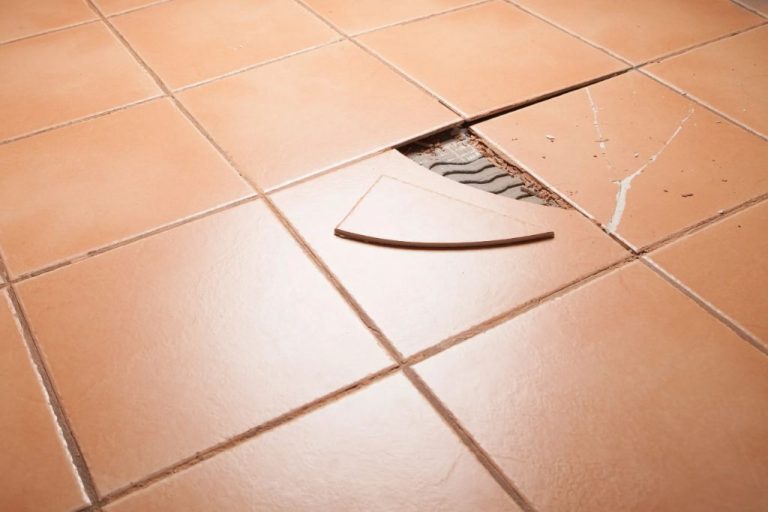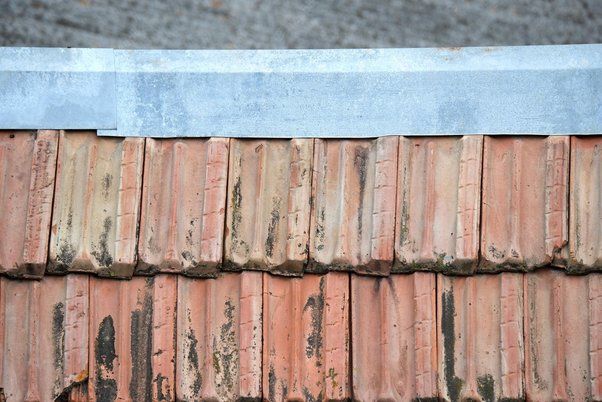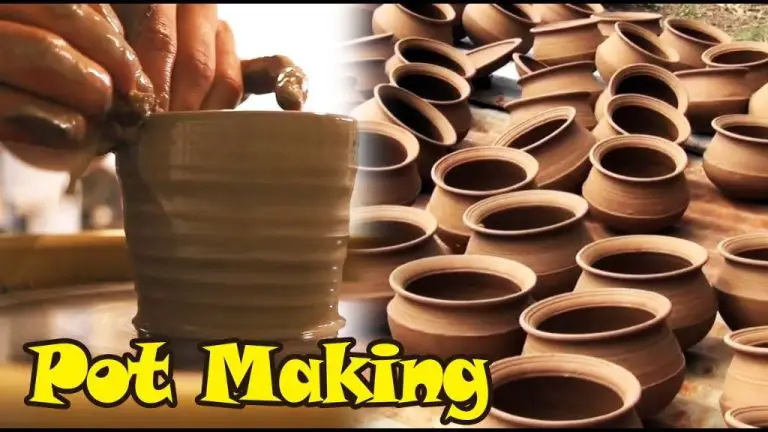What Are The Components Of Stoneware Clay?
Stoneware is a type of clay used for making pottery. It is unique in that it vitrifies or becomes glass-like when fired at extremely high temperatures ranging from about 2,200°F to 2,400°F. Stoneware gets its name from its extreme hardness after firing. It becomes non-porous and durable while maintaining its shape without sagging or warping even after repeated firings.
The composition of stoneware clays makes them ideal for high temperature firing. They contain 3 essential components:
- Flint or silica which provides strength and structure
- Feldspar which acts as a flux to form glass at high temperatures
- Ball clay which provides plasticity for throwing on the potter’s wheel
When mixed together and fired hot enough, these ingredients melt and flow together to create a strong, vitrified body ideal for functional pottery. The sections below will explore each of these components in more detail.
Clay
The primary component of stoneware clay is clay. There are several types of clay used in stoneware:
- Earthenware clays – These include red and brown firing clays that are iron-rich. They have good plasticity but low strength when fired.
- Stoneware clays – These are higher in fluxes like feldspar and fire to a strong vitreous body at high temperatures. They are less plastic but stronger when fired.
- Ball clays – These are secondary clays added to improve plasticity and workability of the clay body. They also help vitrify stoneware at lower temperatures.
- Kaolin clays – Also known as china clay, these are added to increase whiteness and strength.
The clay provides the plasticity for shaping and forming the clay body. It also gives the fired stoneware strength and durability. The proportions of different clays are balanced to achieve the desired workability, color, and physical properties in the finished stoneware piece.
Flint/Silica
One of the key components of stoneware clay is some form of silica or flint. The purpose of adding silica or flint to a stoneware clay body is to reduce shrinkage and improve thermal shock resistance. During the firing process, the silica remains chemically stable and helps the clay maintain its shape.
The most common forms of silica used in stoneware recipes are flint, silica sand, or recycled material like crushed porcelain or ceramic scrap. Flint produces the cleanest color results, while sand contains some impurities that can discolor the clay. Using recycled ceramics works well too, but the particle size is less consistent. Regardless of the source, the silica particles should ideally be fine and mesh between 80-200.
Silica is a key structural component in stoneware clay. It helps strengthen the clay body, reduces warping and cracking, and allows the development of smooth, vitreous surfaces during firing. The percentage of silica in a stoneware recipe can range anywhere from 10-30% depending on the characteristics desired.
Feldspar
Feldspar is an essential component of stoneware clay that acts as a flux. During firing, feldspar promotes vitrification by lowering the melting temperature of the clay body. This allows the clay and minerals to fuse together into a non-porous ceramic.
The most common types of feldspar used in stoneware are potassium feldspar and sodium feldspar. Potassium feldspar (or potash feldspar) contains potassium oxide which increases thermal expansion during firing, enabling stoneware to withstand high temperatures. Sodium feldspar acts similarly but with sodium oxide. The combination of potassium and sodium feldspar provides an effective mix of fluxes for vitrifying stoneware.
Adding around 10-25% feldspar to a stoneware clay body will significantly improve vitrification and strength after firing. Too much feldspar can cause excess glass formation leading to over-firing, so the percentage needs to be balanced with the other clay components. Feldspar aids sintering to produce a dense, durable stoneware product.
Ball Clay
Ball clay is an essential component in stoneware clay bodies due to its high plasticity. It contains very fine particle sizes that help with plasticity, or how well the clay can be shaped and formed. Ball clay helps stoneware maintain its shape during throwing on the pottery wheel without deforming.
The fine particles of ball clay fill in the spaces between the larger particles of other clays and materials in stoneware. This gives the clay more plasticity and makes it smooth and elastic when wet. Ball clay enables skilled potters to throw thinner walls and taller forms without the clay cracking or slumping.
Too much ball clay can make the stoneware body too sticky and soft. But the right amount, typically 20-30%, greatly improves workability and forming ability. Many potters consider ball clay an essential ingredient in creating high quality stoneware capable of withstanding firing to high temperatures and producing pieces with fine details.
Slip
Slip is an important component used in stoneware clay and glazes. It serves multiple purposes in the production of stoneware:
Purpose: Slip provides a number of benefits when used in stoneware production:
- It can be used as a decorative coating on greenware or bisque fired ware, adding color and effects.
- It acts as a binding agent and improver of plasticity in clay bodies.
- It fills in pores and gives smoothed, finished surfaces after firing.
- Certain slips high in flux ingredients promote glass formation in glazes during firing.
Materials used: Slip is made from clay and water. The specific clay used determines the working properties and fired color/effects. Common ingredients include:
- Ball clay – adds plasticity and lighter color.
- Kaolin – increases whiteness and workability.
- Feldspar – provides flux for glaze-like surfaces.
- Silica – improves suspension and application properties.
- Metal oxides – introduce colorants and desired effects.
Application techniques: There are several methods to apply slip:
- Dipping – fully submerging ware into a slip bucket.
- Pouring – directly pouring slip onto the piece.
- Brushing – using a brush to selectively apply slip.
- Spraying – using a spray gun or atomizer for even, thin coats.
- Trailing – dripping slip from a nozzle for lines and decoration.
Firing Process
Firing is a critical step in transforming soft clay into a strong, finished stoneware product. Stoneware clays require high firing temperatures to vitrify and become watertight. Firing is done in two stages – bisque firing and glaze firing.
Bisque firing is the first firing cycle, which converts the raw clay into a ceramic material. Bisque firing is done at lower temperatures, typically around 1800°F to 2100°F (1000°C to 1150°C). At these temperatures, chemical water is driven off and clay particles partially fuse together through sintering. This makes the clay permanently hard and prepares it for the application of glazes.
After bisque firing, glazes can be applied to the fired clay body. Glazes are made from powdered glass that melts at high temperatures to form a glassy coating. The pottery is then fired a second time at an even higher temperature to melt the glazes. Glaze firing for stoneware is typically around 2200°F to 2400°F (1200°C to 1300°C). At these temperatures, the glazes fuse into a smooth, impermeable glass surface.
The higher temperatures of the glaze firing further strengthen and vitrify the clay body. Firing stoneware to these high temperatures gives it a non-porous surface so it can hold liquids without leaking, which is why stoneware is popular for mugs, bowls, and other functional pottery.
Glazes
Glazes are an important component of stoneware pottery. They serve both decorative and functional purposes by providing an impervious, glassy coating over the porous clay body after firing. There are several main types of glazes used on stoneware:
- A transparent glaze allows the natural color of the clay body to show through while providing a smooth, glassy surface.
- An opaque colored glaze comes in endless colors and completely covers the clay beneath it.
- A crystalline glaze contains materials that form visible crystals, resulting in a sparkling effect.
- A crawling glaze pulls back from the edges to create a mottled, textured effect.
Glazes may be applied using a variety brushing, dipping, or pouring techniques. The firing process melts the glaze ingredients, causing them to fuse with the clay body beneath. Firing temperature, kiln atmosphere, and glaze chemistry all affect the final glazed surface.
Common firing effects achieved with stoneware glazes include crackling, spotting, blushing, and breaking to reveal the clay color underneath. More complex multi-layered and patterned surfaces can also be created by combining glaze types, applications, and firing methods.
Properties of Fired Stoneware
Some of the key properties of stoneware after firing include:
Strength
Fired stoneware has extremely high mechanical strength and durability. The vitrified clay body is much tougher and stronger than bisque or earthenware pottery. This makes stoneware very resistant to chips, cracks, and breakage in everyday use.
Porosity
Stoneware becomes vitrified and non-porous during firing. This means it does not absorb water readily, making it good for kitchenware for cooking, food and liquid storage. The lack of absorption prevents microbes and bacteria from accumulating in the fired clay body.
Appearance
The high temperatures of stoneware firing melt the silica and fluxing materials, resulting in a vitrified surface with an appearance ranging from matte to glossy depending on the choice of glazes and firing temperature. The clay body typically takes on an off-white to gray color.
Example Stoneware Clay Recipes
Here are some example recipes for crafting your own stoneware clay from raw materials. These blends of clays, flints, and feldspars have ratios optimized for stoneware firing temperatures (1,200 – 1,300° C or 2,200 – 2,400° F) and can be used for handbuilding or throwing on the wheel:
All-purpose Stoneware Clay – 60
- 60% ball clay
- 20% flint silica
- 20% potash feldspar
- Fire to Cone 10 (2,300°F)
Durable Stoneware Clay – 80
- 80% ball clay
- 10% silica
- 10% feldspar
- Fire to Cone 9 (2,250°F)
Porcelain-like Stoneware Clay – 72
- 72% ball clay
- 18% flint
- 10% potash feldspar
- Fire to Cone 10 (2,300°F)
Note these recipes may need some adjustment based on the properties of the specific clays and minerals used locally. Test firing a variety of mixes is key to dialing in stoneware clay. Minor additions of bentonite or kaolin may also fine-tune workability and fired characteristics.




